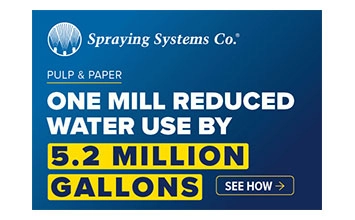In the pulp and paper industry, achieving carbon neutrality is an ambitious but increasingly urgent goal that reflects the sector’s critical role in the global climate equation.
Carbon neutrality means that the net amount of carbon dioxide emissions produced by every stage of pulp and paper manufacturing—from harvesting trees to processing fibers and delivering finished products—is effectively reduced to zero. This balancing act is essential as the industry works to reduce its carbon footprint while meeting rising demand for sustainable packaging and paper products.
At its core, carbon neutrality in this sector requires a fundamental transformation of both energy use and raw material sourcing. Traditional pulp and paper mills have historically relied on fossil fuels to power complex processes such as pulping, bleaching, drying, and paper finishing. To shift toward carbon neutrality, mills must dramatically reduce their dependence on coal, natural gas, and oil, replacing them with renewable energy sources like biomass—as used by companies such as Suzano—hydroelectricity, or wind power, as seen at Port Hawkesbury. By doing so, they not only cut greenhouse gas emissions but also capitalize on the natural carbon cycle inherent in forestry.
Sustainable forest management plays a pivotal role in this equation. Trees absorb CO₂ from the atmosphere as they grow, storing carbon in their biomass. When harvested responsibly, forests can be regenerated, maintaining a continuous carbon sink. This natural cycle contrasts sharply with fossil fuel emissions and is a defining advantage of wood-based industries. Many pulp and paper companies emphasize certification programs, such as those by the Forest Stewardship Council (FSC) or Sustainable Forestry Initiative (SFI), to demonstrate that their fiber comes from well-managed, renewable sources that contribute positively to carbon sequestration.
However, reducing direct emissions is only part of the equation. Some emissions are unavoidable due to the nature of the processes or the limits of current technology. To address this, the industry increasingly turns to carbon offsetting strategies, including investing in reforestation projects, methane capture at landfills, or carbon capture and storage (CCS) technologies—like those developed by Svante—that trap emissions before they escape into the atmosphere. The purchase of carbon credits allows companies to balance out residual emissions by funding environmental projects elsewhere, moving them closer to a net-zero footprint.
Beyond energy and sourcing, innovation in product design and waste management is critical. The pulp and paper sector is embracing circular economy principles, maximizing recycling to reduce reliance on virgin fiber and cutting waste that would otherwise contribute to greenhouse gases in landfills. Mills are also turning wood residues—once considered waste—into bioenergy or raw materials for bioproducts, an approach adopted by Votion Biorefineries. This effectively turns carbon-rich byproducts into valuable resources rather than emissions sources.
Furthermore, emerging bio-based materials like cellulose nanocrystals and lignin-derived adhesives not only have lower carbon footprints than traditional petrochemical alternatives but also can lock away carbon within durable products, extending the carbon storage cycle beyond the forest.
Achieving carbon neutrality is no small feat. It requires systemic change, significant capital investment, and ongoing innovation. But as climate regulations tighten and consumers demand greener products, the pulp and paper industry’s path to net-zero emissions is not just a corporate responsibility—it’s a strategic imperative for long-term resilience and relevance in a rapidly evolving global economy.
























































